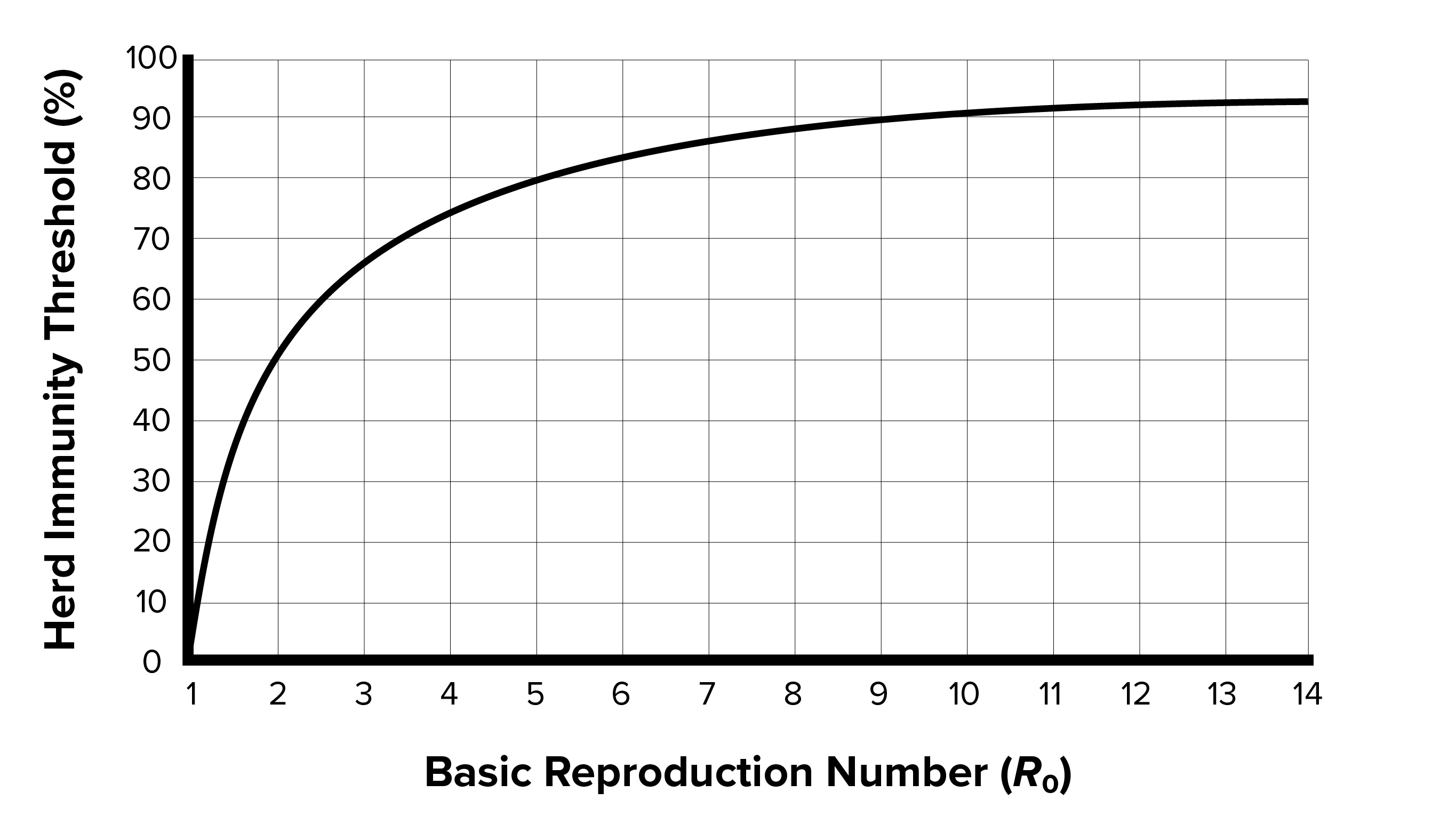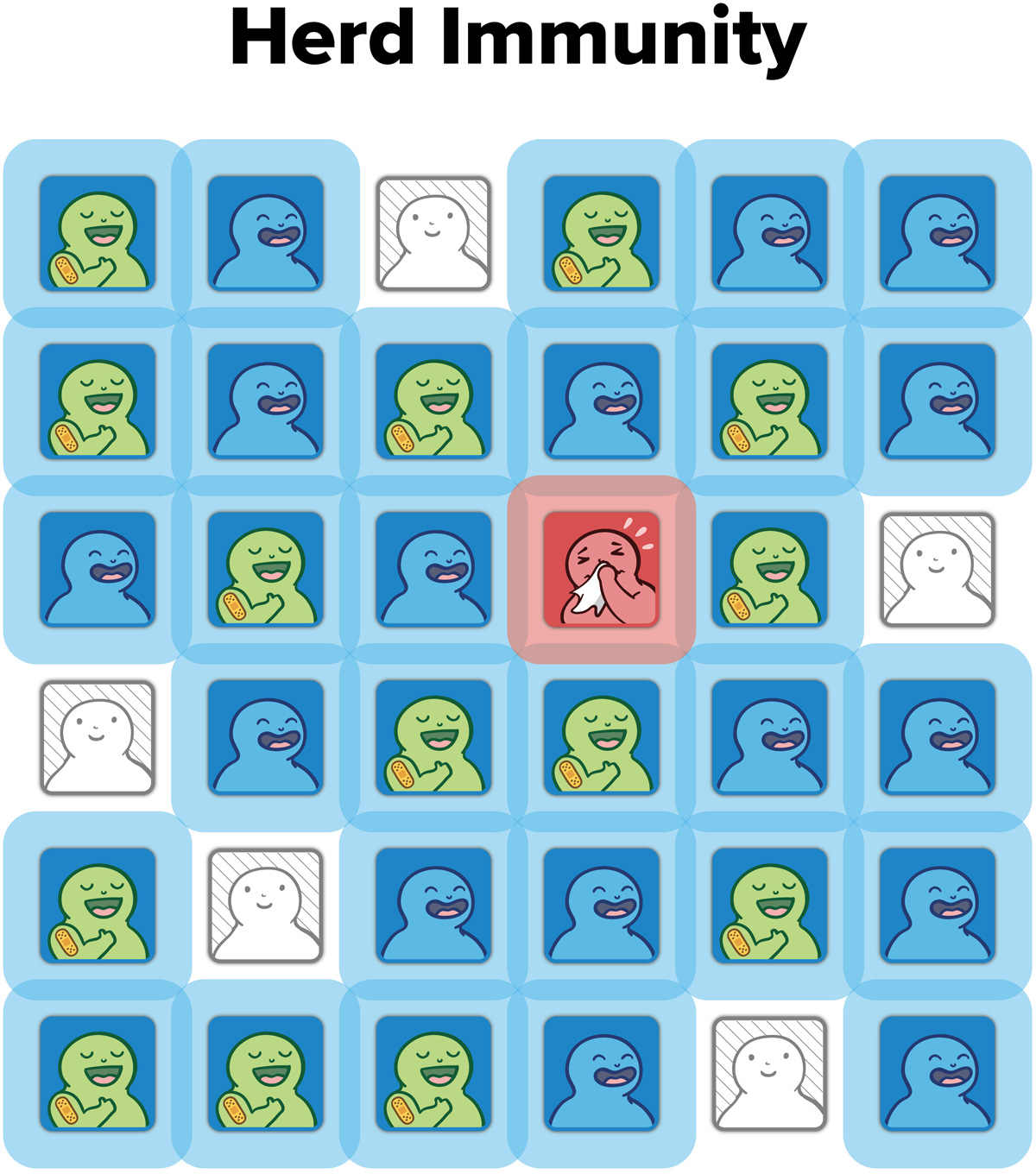Immunity Background
In this section, you'll learn how individuals and populations can gain immunity, which reduces the spread of an infectious disease.
Immunity Can Slow the Spread of a Pathogen
As a pathogen spreads throughout a population, individuals who become infected and recover typically develop immunity against the pathogen.
Another way individuals can develop immunity against the pathogen is by receiving a vaccine. Vaccinated individuals go directly from the susceptible group to the removed group, skipping the infectious group.
In the “Epidemic Simulator,” vaccination can be modeled by increasing the “Initial Removed Individuals” setting. This action can represent the movement of susceptible individuals directly to the removed group before the start of the simulation.

Herd Immunity Protects the Population
When enough individuals in a population have immunity, the pathogen can’t spread easily. This protects still-susceptible individuals from being exposed to and infected by the pathogen. This effect is called herd immunity.
The herd immunity threshold (HIT) is the proportion of immune individuals needed in a population for that population to have herd immunity. HIT depends on the basic reproduction number (R0) as follows:
The higher the R0 of a given pathogen, the more quickly it can spread, which means a higher HIT may be required to prevent an epidemic.


